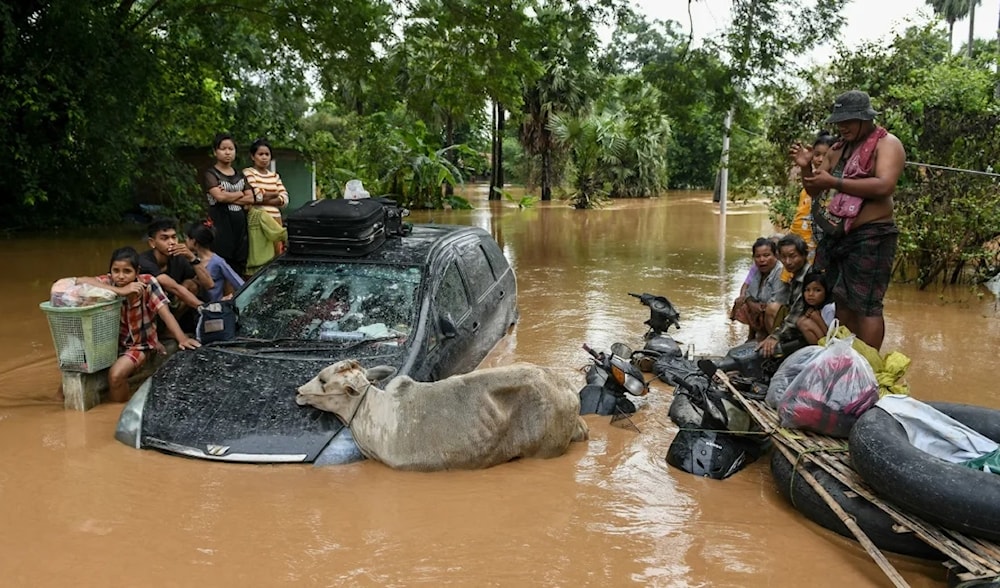113 killed, 320,000 displaced after Typhoon Yagi strikes Myanmar
The damaged infrastructure and disrupted telecommunications networks have hindered the effective gathering of information related to the rising deaths across Myanmar.
-

Flood-affected residents wait for a rescue boat to arrive in Taungoo, Myanmar, on September 14, 2024. (AFP)
At least 113 people have been killed in Myanmar, the military government reported, following heavy rainfall caused by Typhoon Yagi which had earlier struck Vietnam and Thailand.
Approximately 320,000 people have been displaced and 64 were reported missing, government spokesperson Zaw Min Tun stated, according to state-run MRTV.
“The government is conducting a rescue and rehabilitation mission,” he said.
The flooding began last Monday, resulting in at least 74 people killed by Friday, according to state media reports.
Marked as Asia’s strongest storm in 30 years, Yagi has destroyed five dams, four pagodas, and more than 65,000 houses from its flooding in Myanmar.
“Central Myanmar is currently the hardest hit, with numerous rivers and creeks flowing down from Shan hills,” the United Nations Office for the Coordination of Humanitarian Affairs (OCHA) said.
The agency highlighted that Yagi’s heavy rain mainly affected Myanmar’s capital city Naypyidaw, including the Mandalay, Magway, and Bago regions, as well as the eastern and southern Shan, Mon, Kayah, and Kayin states.
The damaged infrastructure and disrupted telecommunications networks have hindered the effective gathering of information related to the rising deaths and landslides across the country.
Around one-third of Myanmar’s 55 million population requires humanitarian assistance. However, many agencies, including the International Committee of the Red Cross, cannot operate in most areas due to access restrictions and security risks.
Typhoon Yagi hits Vietnam after wreaking havoc in China, Philippines
Yagi had already caused fatalities in other regions, claiming at least two lives in China's Hainan Island and 16 in the Philippines, the first country it struck after forming east of the archipelago earlier this month.
Vietnam’s coastal city of Haiphong, an industrial center with a population of two million and home to factories of multinational companies, as well as local automaker VinFast, was one of the hardest-hit areas. Wind speeds reached up to 90 kph, causing widespread damage.
Authorities reported that as the storm approached, Haiphong and at least three other northern provinces experienced major power outages on Saturday.
Earlier, in Hainan, home to more than 10 million residents, the storm uprooted trees, flooded streets, and caused power outages in over 800,000 households.
Vietnamese authorities evacuated more than 50,000 people from coastal towns and deployed 450,000 military personnel, according to the government. Four airports, including Noi Bai in Hanoi—northern Vietnam’s busiest airport—were shut down for several hours, resulting in the cancellation of more than 300 flights.
High schools across 12 northern provinces, including the capital Hanoi, home to 8.5 million people, were also closed. Authorities there suspended public transportation services, including buses and the city's two elevated metro lines, as a precautionary measure. The meteorological agency warned of heavy flooding risks in the city’s center.
Scientists attribute the increasing intensity of typhoons to warmer oceans, driven by climate change.

 3 Min Read
3 Min Read








